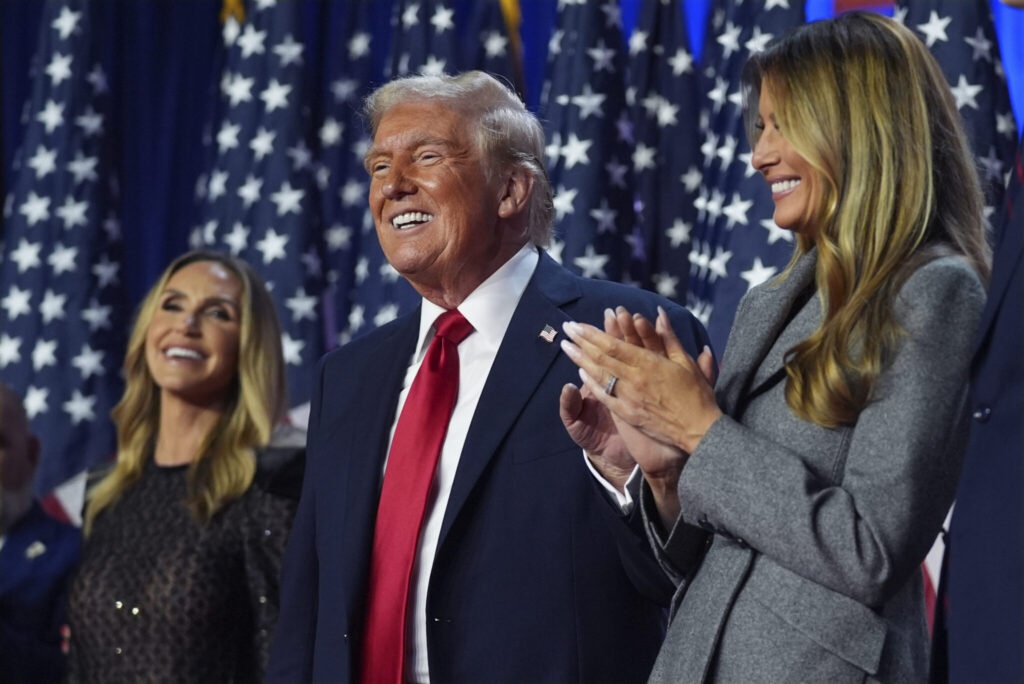Trump 2024 election/ Trump comeback victory/ AP VoteCast analysis/ Trump coalition strategy/ Trump diverse voter support/ Newslooks/ WASHINGTON/ J. Mansour/ Morning Edition/ In an improbable comeback, Donald Trump clinched the 2024 election, overcoming legal troubles, multiple indictments, and fierce opposition. Using social media and reaching new voter segments, Trump tapped into voter frustrations and outmaneuvered his opponents. This victorious return to the White House highlights a new coalition Trump built among younger, diverse voters and traditional supporters.

“Trump’s 2024 Comeback Quick Looks”
- Resilient Comeback: Trump overcame past controversies and legal issues to win back the White House.
- New Voter Outreach: Focused on young voters, Black and Latino men, and non-traditional media appearances.
- Survived Assassination Attempts: Trump continued his campaign despite two attempts on his life.
- Campaign Shake-Ups: Faced unexpected challenges, including a last-minute candidate switch from Biden to Harris.
- Key Demographic Shifts: Expanded support across diverse groups while maintaining his traditional base.
From Defeated Ex-President to 2024 Winner: Trump’s Historic Comeback
Deep Look
As Donald Trump exited Washington in January 2021, he hinted at a future comeback, saying, “We will be back in some form.” This statement foreshadowed a remarkable turnaround for Trump, who returned in 2024 as a victorious contender after years of legal battles, controversies, and criticisms. This time, his win was powered by a unique coalition of supporters, targeted voter outreach, and a steadfast message of change.
Building a New Coalition
Trump’s return to office came with a diverse coalition, shifting his appeal beyond his traditional base. After his 2020 loss, Trump focused on expanding his outreach to young voters and minority communities, including Black and Hispanic men, a strategy that proved pivotal. By connecting with younger generations through popular podcasts and non-traditional media, Trump engaged new segments of voters who were feeling increasingly distanced from the political establishment. His campaign emphasized issues like economic uncertainty and cultural identity, resonating especially with those frustrated by high costs and a volatile job market.
Legal Struggles and a Resilient Campaign
Trump’s path back to the White House was not without its hurdles. Facing multiple indictments and civil rulings, he turned these challenges into an “us versus them” narrative, portraying himself as the victim of a system stacked against ordinary Americans. This strategy helped him consolidate his core base and attract those sympathetic to his message of defiance. Trump’s legal battles, far from weakening his campaign, amplified his message and contributed to his image as an embattled but unyielding figure in American politics.
A particularly powerful moment came during a campaign rally in Pennsylvania, where an assassination attempt left Trump bloodied but undeterred. With the crowd rallying around him, the incident became symbolic of his campaign’s resilience, with supporters chanting, “Fight! Fight! Fight!” Trump used the incident to demonstrate his commitment to his followers and position himself as a leader who would persevere against the odds.
Navigating Unexpected Shifts
Trump’s campaign initially prepared for a rematch with President Joe Biden. However, a poor debate performance in June led to Biden withdrawing from the race, paving the way for Vice President Kamala Harris. This last-minute switch posed a fresh challenge for Trump’s campaign, forcing them to adjust their strategy to confront Harris, a younger candidate who represented a historic run as the first Black and South Asian woman to lead a major party ticket. Trump adapted quickly, casting Harris as emblematic of the current administration’s policies, which he criticized as out of touch with the needs of ordinary Americans.
In response, Trump’s team ramped up ads painting Harris as “dangerously liberal” and mocking her campaign style as out of step with the electorate’s concerns. Harris’s message of “moving forward” was met with skepticism by voters who yearned for a return to stability and economic strength, echoing Trump’s message of restoring past prosperity.
Targeted Messaging and Outreach
Trump’s campaign leveraged non-traditional media platforms, bypassing mainstream outlets to reach audiences directly through popular podcasts and social media. This approach allowed him to appeal to a new generation of voters, positioning himself as an accessible and relatable candidate. Trump’s appearances on platforms like Adin Ross and Joe Rogan’s podcasts helped him reach millions of younger, typically disengaged voters, who appreciated his unfiltered, conversational style. He attended major sports events, drawing cheers from crowds at football games and UFC matches.
In line with his populist approach, Trump made appearances at everyday establishments, including a memorable stop at a McDonald’s, where he greeted supporters from the fry station. This strategy fostered a sense of connection with working-class voters, who saw Trump as someone who understood and shared their everyday experiences.
Navigating Controversies and Challenges
Despite careful planning, Trump’s campaign faced challenges in the final days. A rally at New York’s Madison Square Garden was overshadowed by inflammatory remarks from pre-show speakers. Trump quickly recovered, criticizing Biden for an insensitive response, and his campaign pivoted by creating memorable moments with a garbage truck photo-op to underscore his commitment to “cleaning up” politics.
A Diverse Coalition on Election Night
Trump’s successful outreach included attracting voters from various demographics. He made inroads with Black and Hispanic men, and surprisingly, Muslim and Arab-American voters who were traditionally less likely to support him. Campaign stops in communities like Dearborn, Michigan, and Hamtramck saw high turnout from these groups, reflecting Trump’s appeal as a candidate willing to confront both domestic and international issues in ways that resonated with a wide range of Americans.
This expanded coalition marked a historic realignment, reflecting a new political landscape in which voters from various racial, ethnic, and social backgrounds aligned around Trump’s anti-establishment message. His focus on economic growth, immigration, and foreign policy played a significant role in uniting these diverse groups.
A Triumphant Return
On election night, Trump celebrated his victory at Mar-a-Lago, joined by campaign supporters and prominent figures like Elon Musk and Robert F. Kennedy Jr., who symbolized the new political alignment backing Trump. His acceptance speech emphasized that his win marked a “return of control” to the American people and underscored the significance of his coalition of working-class Americans across demographic lines.
Trump’s improbable journey from a controversial former president to a successful candidate once again highlighted the effectiveness of his campaign’s message and strategy. His re-election signals a new era in American politics, with a coalition built on economic frustration, cultural appeal, and an anti-establishment platform that resonates deeply with many Americans.







